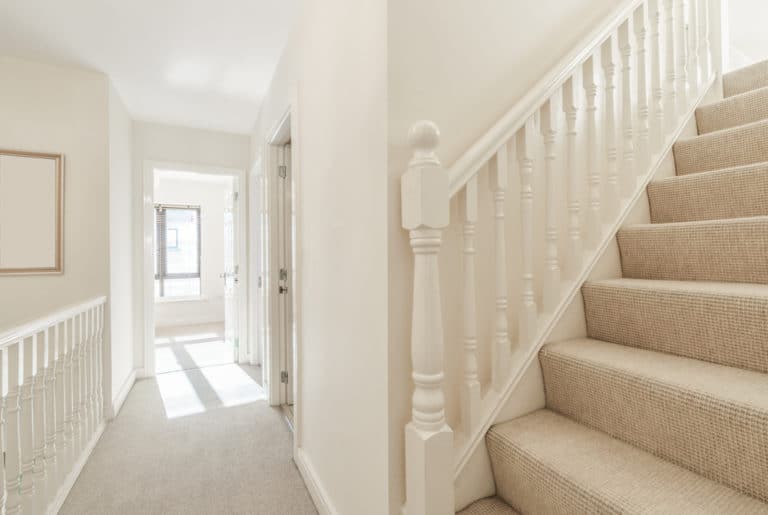You may have noticed that mortgage rates have gone down compared to when you bought your home years ago.
Or maybe you’d like to change your loan term. Maybe you’d like to switch to a 15-year mortgage from a 30-year mortgage. On the other hand, you may have a 15-year mortgage as your existing mortgage but need to reduce the amount you pay per month (some people choose to accomplish this by refinancing with longer terms or a lower rate.)
Whatever your reason, what exact steps can you take to get a mortgage refinance? Let’s walk through the steps, reasons to refinance, costs of refinancing your mortgage, how to refinance a mortgage and more.
What is Mortgage Refinance?
Refinancing means you replace your old mortgage with a new one and possibly new mortgage terms, such as a new interest rate or loan term.
For example, let’s say you bought a home for $200,000 five years ago. You put down $40,000 for a down payment and took out a loan for $160,000. Now, you’d like to lock in a lower interest rate and lower your monthly mortgage payments because interest rates have gone down. A refinance could offer a great opportunity to accomplish your goals.
Reasons to Refinance Your Mortgage
Why might you want to refinance your mortgage? Let’s take a look at several reasons why doing so can be beneficial.
Reduce Your Monthly Payment
You may consider refinancing in order to reduce your monthly mortgage payment. Here’s how it could work:
Say you have a $200,000 mortgage at 5% interest rate. You would pay $1,074 per month on a 30-year fixed-rate mortgage. If you refinance and change your mortgage rate to 3% on a 30-year fixed-rate mortgage, you could reduce your monthly payment to $843.
You can also extend your loan term to reduce your monthly payment. For example, let’s say you had a 3% interest rate and a 15-year fixed-rate mortgage on a $200,000 loan and you lengthened it to a 30-year fixed-rate mortgage loan. Your monthly payment would go up to $1,381 per month with the 15-year mortgage and reduce to $843 on the 30-year mortgage.
Note: The amounts above do not consider insurance or tax costs — they concern only principal (the full amount you owe) and interest (the interest rate you pay to borrow from your lender).
Lower Your Interest Rate
Over the full term of your mortgage, you could save money by refinancing. You may want to plug your old and new interest rates into a refinance calculator and determine how much you’ll save in interest with a new mortgage.
Pay Off the Loan Faster
When you want to pay off your mortgage faster, you may consider refinancing to a shorter loan term as we outlined earlier. This means you could pay off your loan sooner.
Change Your Loan Type
You may want to change to a different loan type. For example, let’s say you currently have an FHA loan. In this case, you’ll pay for mortgage insurance throughout the life of the loan if you put less than 10% down. As soon as you reach 20% equity in your home, you may want to consider switching from a FHA loan to a conventional loan to get rid of the mortgage insurance premium (MIP).
Convert to an ARM or Fixed-Rate Mortgage
You may want to convert from an adjustable-rate mortgage (ARM) to a mortgage with fixed rates. ARMs have variable interest rates that can change. A fixed-rate mortgage stays the same throughout the life of the loan.
Cash Out Your Equity
You can withdraw money from your home equity using a cash-out refinance to take out money from your home equity. You can do what you wish with the money you take out. Here’s how a cash out refinance works: You take on a higher loan amount and in exchange, your lender gives you the difference in cash.
Let’s say that your principal balance is $200,000. If you want to take care of a $20,000 kitchen remodel, you’d take out a $220,000 loan to get the $20,000 out in cash.
What Does it Cost to Refinance?
While it’s true that you may pay closing costs, your lender might cover them. Let’s walk through the costs you may pay for when you refinance.
Loan Origination Fee
You might pay an upfront mortgage origination fee charged by a lender to process a new loan application or to execute the loan.
Appraisal Fee
An appraisal evaluates the fair market value of your home. Your lender orders the home appraisal and you may pay for this cost at closing. Your lender may also pay these for you, however.
Title Insurance Fee
Title insurance protects you and your lender if your home has a pre-existing claim or lien. For example, if a legitimate claim to the home comes up, the insurance company will pay you or your lender for the charges associated with the claim.
Credit Report Fee
Your lender will check your credit. You may pay a credit report fee, which covers the cost for your lender to get copies of your credit reports and scores.
Prepaid Interest Charges
Prepaid interest charges on a mortgage loan represent the amount of interest that you owe between the time you sign your loan agreement and make your first monthly payment. You’ll pay prepaid interest in the form of upfront closing costs.
Recording Fee
State and local agencies charge recording fees in order to register a property’s transfer of ownership.
Mortgage Points
Mortgage points, also called discount points, are fees that you pay to lower your interest rate on your home purchase or refinance.
How to Refinance a Mortgage
First, it’s helpful to set a clear financial goal. Do you want to get a lower interest rate, lower your monthly payment, make home improvements or change to a fixed interest rate?
- Reach out to Morty to learn more about your refinance options. You could qualify for a refinance if you’ve previously bought a home with Morty, or you could learn more about other products and services we offer.
- Know your property value and how much equity you have in your home. The maximum amount of extra cash you can borrow comes from the appraised value of your home — subtract your unpaid balance from that amount.
- Meet specific credit and income criteria, and undergo an appraisal. You have some control over your credit score, a three-digit number that proves how well you pay back debt. It’s a good idea to get a credit report at annualcreditreport.com or another similar website so you can resolve any mistakes that exist within your credit. You may work to increase your credit score by paying off debt, making payments on time and reducing the use of your credit cards, for example.
- Check your debt-to-income (DTI) ratio. Your DTI ratio refers to the percentage of your debt obligations that you spend compared to your monthly gross income. Lenders want to know your DTI ratio to make sure you don’t take on too much debt.
- Check your tax situation. You can take advantage of tax deductions with a refinance. A deduction can reduce your tax burden when you file your taxes. For example, let’s say you earn $60,000 in annual income before taxes. If you have $10,000 in deductions, you’ll then only pay taxes on $50,000.
- Prepare for the home appraisal. Consider updating portions of your home, including the landscaping, roofing, lighting and plumbing, amenities and finishing details of your home. Doing so can make a difference in the results of your appraisal — it could raise the appraised value of the home.
- Is the refinance worth it? You may also want to figure out all your costs so you can decide whether your refinance is worth it. Do the refinance rates make sense for your situation? You can use a mortgage calculator to analyze your monthly savings and your break even point, or the number of months it will take you to recoup your closing costs.
Finally, close on your new loan. Your lender will offer guidelines and help as to how to close on your refinance.
Risks of Refinancing Your Mortgage
What risks do you face with refinancing your mortgage? You may experience the following:
- Costs of refinancing: Closing costs will vary depending on the size of the loan. Your lender will disclose the final closing costs you will pay on the Closing Disclosure it will issue at least three days before you close.
- Prepayment penalty: A mortgage prepayment penalty refers to a fee that some lenders charge when you pay your mortgage off early. Many lenders no longer charge a prepayment penalty, but you may want to check ahead of time to see whether you’d have to pay this penalty.
- Paying more tax due to reduced interest: Refinancing your mortgage can reduce your total tax deductions. Refinancing to a lower mortgage rate means you pay less in interest, which means you can’t deduct as much in interest at tax time.
Refinance vs Cash-Out Refinance
What are your refinance options? How does a cash-out refinance work?
During a cash-out refinance, you replace your current mortgage with a larger one and take the difference between the two mortgages in cash. You pay off your mortgage lender with the bigger loan and take the remainder in cash. You can do whatever you want with the money.
Here’s a quick example of a cash-out refinance:
Let’s say your current mortgage balance is $100,000. You refinance for $200,000 and receive the difference, $100,000, as your cash-out amount, though keep in mind that you will pay for closing costs.
A cash-out refinance differs from a no-cash out refinance, or rate-and-term refinance, because you change the terms of your current loan and replace them with different terms in a no-cash out refinance. You don’t get any cash back in this situation.






